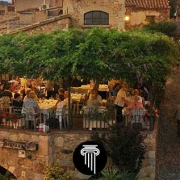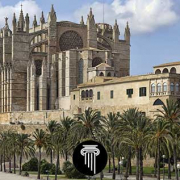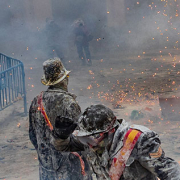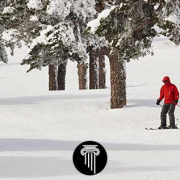Spanish Traditions: A Complete Guide to Spanish Customs
Many Spanish traditions are passed down from generation to generation, and these traditions add colour and culture to the Spanish way of life. This article will explore some of the most famous Spanish traditions and their meanings.
Content
Most famous Spanish tradition
Each year, people worldwide flock to Spain to witness some of its most famous traditions. These include:
- Flamenco
- Tapas
- Running of the Bulls
Below you can find more information on all Spanish traditions per category. You will know much more about Spain’s rich culture when you finish this article.
Traditional Spanish Events
Spanish festivals are often a spectacle to behold. Spanish people love to celebrate and party, and they have several unique traditions that make their events memorable. Some of the most famous Spanish events include:
Religious festival
Spanish people like enjoy many religious festivals. Most of these festivals have a unique history, and all of them create joy and enthusiasm. The religious festivals include:
- Semana Santa (Palm Sunday and Holy Week)
- All Saints’ Day (Todos Los Santos)
- The Three Kings Day parade (Los Reyes Magos)
City and town events
Traditions in Spain vary per region, and the cultural heritage is very diverse. However, some traditions are shared throughout the country, such as festive events that coincide with religious holidays and traditional celebrations with unknown origins. Examples of town festivals are:
- Las Fallas (the festival of fire) in Valencia
- The Jarramplas in Piornal
- Flower Festival in Girona
- La Mercé (the Feast of the Virgin of Mercy) in Barcelona
- San Isidro Festivities in San Isidore
- Feast of Saint James (Dia de Santiago) in Galicia
Bull running and bullfighting
Bullfighting is considered a national sport in Spain, and it is deeply rooted in the country’s culture. Bull running finds its origin finds itself in the early 14th century and bullfighting from the times of the gladiators. To this day, it continues to be a tradition for some. However, in recent years there have been fewer bullfights due to costs and animal rights pressures, but they are still very much alive in some country regions.
San Fermín in Pamplona is the most famous bull-running event in the world. This event takes place every year in July, and it attracts thousands of visitors.
Traditional Spanish Food
There are many traditional dishes in Spain, and tourists and locals enjoy them. Spain doesn’t have a lot of spicy food, and Spanish food is famous for ingredients like olive oil, garlic, tomatoes, meats, and fish.
Paella
Paella is a dish that is synonymous with Spanish culture. It is a rice dish cooked in a special pan called a paella pan. The ingredients for Paella vary, but typically it includes rice, saffrons, vegetables, and meats/seafood.
Paella is eaten at celebrations such as birthdays and family gatherings. If you want to experience it, find a highly rated Spanish restaurant online and go for a plate of Paella.
Tapas
Tapas are the Spanish version of small bites. They are small dishes that combine into a small or large meal, and they can be cold or hot. Dinner tapas are typically larger and can be shared among a group. Some popular tapas dishes include patatas bravas (fried potatoes with a tomato sauce), gambas al ajillo (garlic shrimp), calamares (fried squid), olives in garlic, fried cheese, and tortilla de patatas.
Tapas are also enjoyed in a bar or tapas restaurant. For example, you can start with a base of 4 tapas and then order a different tapa each time you order your next round.
Spanish ham
Spanish ham (Jamón / Serrano Jamón) is a type of dry-cured ham considered a Spanish delicacy. It is made from the hind legs of pigs and served as served a tapa or main course.
Spain is famous for its meat products. Visit local markets to enjoy fresh products that have been locally sourced.
Traditional Spanish Drinks
In Spain, people love to drink. The Spanish take their drinking very seriously, and they have a rich culture of alcoholic drinks served at celebrations and large gatherings. Below are some popular Spanish beverages.
Sangria
Sangria is a popular Spanish drink made with wine, fruit, and spices. The ingredients vary, but typically Sangria includes red wine, citrus juice (orange, lemon, or lime) juice, sugar/syrup, and cinnamon. Some people also add brandy or rum to their Sangria.
You can find Sangria at celebrations, and it is the perfect drink for warm weather. Many tourists also enjoy Sangria, and many restaurants and bars throughout Spain serve it. Order a glass or go for a carafe of Sangria, and enjoy the Spanish streets all evening.
Tinto de Verano
The Tinto de Verano is a summer drink that is similar to Sangria. “Tinto” means “Red” and Verano means “Summer”. The drink is widespread among Spaniards, especially teenagers young people. You make it by combining red wine with soda (La Casera or Sprite with carbonated water), usually equal. The bartender serves the drink over ice cubes and a lemon slice.
Tintos are popular during the hot summer and is great to experience in the daytime or nighttime. You can try a glass of Tinto de Verano and Sangria, and see which one you like more.
Red Sweet Spanish Vermouth
Sweet Spanish vermouth is a type of wine. It is a sweet red wine with added alcohol. Bartenders make the drink by pouring the dark red wine over ice and adding olive and an orange slice.
With over 150 types of Spanish vermouth, it is a drink you can keep exploring. Have one at a restaurant for dinner, or enjoy it at dinner. There is also a “La Hora del Vermut”, typically between 12:00 and 13:00 on Sundays.
Cava
Cava is a sparkling white or rose wine that has its origin in Spain. The wine is made from the the Macabeo, Xarel·lo and Parellada grape. Cava means basement in Catalan, and it refers to the cellar where the wine ripes. Cava is the competitor of champagne, and the drink became popular in Spain when there was a trade war between Spain and France.
It can be served with food, but it’s great for toasts and celebrations. You can also drink it as a sparkling white wine. You can find cava in any liquor store or supermarket in Spain. Go for a bottle of cava and celebrate Spain with the taste of Spanish sparkling wine.
Traditional Spanish Activities
Spain’s traditions also include activities they partake in during the day and night. Their Mediterranean lifestyle and cultural heritage have a lot to do with how Spaniards live their lives. Below are some traditional daily and nightly activities.
Siesta
The siesta is an afternoon rest that is common in Spanish culture. It’s a time to relax and catch up on some sleep after a long day of work. It is taken due to the hot weather, and it usually lasts for about two hours. Today, the siesta is not being taken as often as it used to, and changing work culture makes it nearly impossible for the long break.
It’s still a common tradition in small Spanish towns, and of course, there is no problem enjoying it on the weekend ad on holidays. Make sure to have a refreshing nap in the afternoon in Spain and feel what it’s like to take a break from the heat.
Lunchtime
While changing in certain companies, around 13:30, employees have a one to two-hour lunch break. This is when they can go home and enjoy a meal with their family or stay at work and eat in the cafeteria.
Many lunch places in Spain offer lunch specials that are very affordable; some are not yet open at 12:30. You can find a lunch special for €5-€10 if you’re looking to save money and eat good, go to a Spanish restaurant for authentic tapas, soap, or warm meals.
Late night dinners and bar scene
Spaniards are known for their love of late-night dinners. They often eat dinner at around 21:00 or 22:00. This is because they like to take their time with meals and relax after a long work day. The climate allows them to have dinner later in the evening.
Spanish bars are also trendy. They offer a relaxed and social atmosphere where people can drink, eat tapas, talk, and listen to music. The nightlife in Spain is something 100% Spanish to experience. In the cities, you can find many streets full of people until late at night. If you’re looking to enjoy the social life in Spain, experience Spanish nightlife. Head out to a bar or club in the evening for a night of fun.
Traditional Spanish Music
Spain is famous for its traditional music, often played at festivals and special occasions. Some of the most famous traditional Spanish music genres are below.
Flamenco
When you hear flamenco music, you think of Spain. Flamenco is one of the most famous Spanish traditions, and it originated in Andalusia. It is a type of music and dance that combines several elements such as guitar, singing, clapping, and footwork.
Flamenco dancing is a passion, and the women’s dresses are colourful and vivid. Because flamenco dancing requires a high level of skill, you won’t see much excellent flamenco dancing at clubs. You can enjoy authentic flamenco in flamenco shows popular tourist attractions.
Jota
The jota is a traditional dance from the Aragon region of Spain. It is a fast and energetic dance usually performed to lively music. The dancers wear long, colourful skirts and vividly patterned shawls. The dance is done with the hands in the air, a lot of spinning and kicking.
If you’re in Zaragoza, make sure to check out a jota show. The Aragonese people take a lot of pride in their traditional dance, and it’s worth seeing. The jota is a popular dance at local celebrations, and you can also visit professional jota shows.
Sardana
The Sardana is a traditional dance from Catalonia. It is a slow, graceful dance performed by a circle of dancers. The dancers hold hands and link arms around the dance area. The origins of the Sardana are unknown, but some believe it is thousands of years old and came from South America.
The Sardana is traditional Catalan dance. If you’re in Barcelona, make sure to check out a performance of the Sardana, and it’s a must-see for any fan of traditional Spanish culture.
Traditional Spanish musical instruments
Traditional Spanish music is an essential part of the country’s culture. Below we discuss three different types of traditional Spanish music.
Castanets
The castanets are a traditional Spanish percussion instrument made from two pieces of hardwood. They are typically played by snapping the fingers and are often used in flamenco music.
Spanish Guitarra
The Spanish Guitarra is a traditional acoustic guitar popular around the world. When you think of an acoustic guitar, you probably think of the Spanish guitar, and it’s also known as the classical guitar and used in Spanish traditional music.
The guitar has a deep and mellow sound, perfect for traditional Spanish music. If you’re looking to buy a Spanish guitar, make sure to get one with nylon strings. They are the most popular type of Spanish guitar for classical and folk music.
Lute
The Lute is a traditional stringed instrument that is often played in Spanish music. It has a pear-shaped body and typically six strings. It was introduced by the Moors in the 8th century and was very popular in medieval Spain.
The Lute is a beautiful instrument that has a soft and mellow sound. It’s perfect for playing traditional Spanish music and is often used in Andalusian music. If you’re interested in learning to play the Lute, many instructional videos are online.
Vihuela
The Vihuela is another Spanish stringed instrument similar to a Lute, and it has a pear-shaped body and six double strings. It was developed as an alternative to the Lute and was popular in the 16th century.
The Vihuela is a beautiful instrument with a sweet sound. It’s perfect for playing traditional Spanish music and is often used in flamenco music. If you’re interested in learning to play the Vihuela, there are many instructional videos online. The Vihuela is typically played with a plectrum and gives the music a bright, ringing sound.
Traditional Spanish clothing
Traditional Spanish clothing is a beautiful and vibrant part of the country’s culture. Below we discuss three different types of traditional Spanish clothing.
Flamenco dress
The flamenco dress is the most iconic piece of women’s traditional Spanish clothing. It is a long, flowing dress usually brightly coloured and heavily embroidered.
It is often very ornate and is perfect for special occasions. If you’re in Seville, make sure to check out a flamenco show and see the beautiful dresses up close.
Spanish fan
The Spanish fan is a traditional piece of women’s clothing often used in flamenco dancing. It is a small, handheld fan made from lace or silk.
The fan can be used to make graceful gestures and add drama to the dance. If you’re in Seville, make sure to watch a flamenco show and see the fans in action, and if your hot, buy one to use it to cool off.
Gilet
The Gilet is a traditional piece of men’s Spanish clothing, and it is a waistcoat or jacket that is typically made from wool or velvet. The Gilet is very decorative flashy, elaborate, yet elegant.
You won’t see many men wearing this clothing nowadays, but it’s still a beautiful part of traditional Spanish culture. When you visit a conventional celebration or show in Spain, make sure to have a look at the men’s gilets. They are very impressive.
Sombrero cordobés
This hat from córdoba is made from soft, felt wool and has a wide brim. The sides are folded up and pinned to the top of the hat.
The sombrero cordobés is typically worn by men and is perfect for keeping out the sun. If you’re in Andalusia, make sure to stop by a souvenir shop and buy yourself a traditional Spanish hat.
Origins of Spanish Traditions
Spain is a country with a rich culture that is full of traditions. Some of these traditions date back hundreds of years, while others are more recent.
A lot of the Spanish traditions have their origin due to the following factors:
1. Location – Spain is a diverse country located on the Iberian Peninsula. Western Europe and North Africa have influenced Spain’s culture over the years.
2. History – Spain has a long and complicated history, which has resulted in a wealth of traditional customs and practices. Many traditions come from various cultures, such as the Romans, the Moors, and the Jews.
3. Religion – Spain has gone through many different religions, from Catholicism to Islam. Each religion has brought its own set of traditions to the country.
4. Folklore – Spain is home to various folklore, including legends, myths, and traditional songs and dances. This folklore has helped to shape the country’s traditions.
5. Language – Spanish is rich in idiomatic expressions and proverbs. These phrases often show up in traditional Spanish songs and poems.
6. Climate – The Spanish climate has also played a role in shaping the country’s traditions. For example, the weather helped develop the siesta tradition to help people take a break from the hot sun.
7. History of Colonisation – Spain was a colonial power for many years, and as a result, Aztec, Mayan, and Incan cultures influenced the country’s culture. People brought these traditions back to Spain, where they have merged with other Spanish customs.
Spanish traditions are a rich part of the country’s culture, and these traditions are enjoyed by people of all ages and help make Spain a unique and wonderful place to visit. While in Spain, be sure to experience some of these traditions for yourself!
Where to explore Spanish Culture
When you visit Spain, there are plenty of ways to enjoy the country’s rich culture. You can experience traditional Spanish music and dance at local festivals or watch a flamenco show in one of the country’s many theatres.
Another way to celebrate Spanish culture is by being lucky and getting invited to a wedding in Spain. Here you can find many Spanish wedding traditions, from the cutting of the groom’s tie, orange blossom, to the black wedding dress.
You can also explore Spanish traditions by sampling some of the country’s delicious cuisine. Try out some local dishes such as Paella, tapas, and tortillas.
And finally, you can learn more about Spanish culture by visiting some of the country’s famous landmarks and historical sites. Be sure to visit places such as the Royal Palace in Madrid, the Alhambra in Granada, and the Basque Country in the north.
Many tourists also visit the Spanish island of Mallorca, which is known for its beautiful beaches and charming villages.
Whatever you do, be sure to enjoy the authentic Spanish culture and go out. There is a lot of culture in Spain you can discover.
A word from SpainDesk
Whether you explore the underground clubs in Barcelona, drink Sangria in Mallorca, or visit a local fiesta in Granada. You will find traditions in Spain everywhere.
We hope you have enjoyed reading about famous traditions and other customs that are not very famous but make Spain the wonderful country it is.





